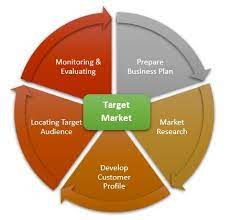At several stages of a business, owners usually have several questions they must answer to succeed. Businesses could have a hard time trying to know your target audience without adequate knowledge. Some of the most pressing questions are:
What kind of products/services should I offer,
Where are my customers located,
What section of the market should my business target, etc.
In the hunt for answers to these questions, target market profiling becomes a necessity. Targeting a market doesn’t mean you’ll abandon other potential customers but focuses on who will most likely buy your products.
When your target market gets a complete definition, you get to spend less and make more money. Targeting the right leads to advance your business also gets a lot easier.
But here’s the thing – to maximize your target market, several steps have to be taken. That’s why this post looks at how to spot your target market for maximum results. With the information this guide offers, reeling in leads will never be hard again.
A target market can be defined as a group of individuals or businesses your products may appeal to.
In digital marketing, a target market is a finite crop of potential customers that are open to patronize a business. Target markets differ based on several factors. One of the major shortfalls of a business stems from failures to define its strongest potential client base.
Big brands currently have the monopoly when it comes to targeting customers over a wider area with their marketing. Most small businesses can’t just put in enough funds to turn the tide in their favor.
Since it is difficult for small and medium businesses to advertise to a wider market, targeted marketing is important.
A local target market refers to a group of potential customers domiciled in a small area. Small businesses usually leverage the local target market to boost their brand presence and generate more leads.
Brands focused on a local market can tailor their services to suit their potential clientele with ease. And advertising to a small market is the best for fledgling business interests.
People’s ages tend to affect several aspects of their life. Age can determine the tastes, preferences, and desires of most consumers. For example, an audience feasibility study on game consoles will focus on Millennials and younger people. If a marketer of gaming consoles targets Boomers, no one may buy the product.
An age target audience focuses on potential customers based on their ages. Age target markets are easier to advertise too when a product up for sale is generic or has features that appeal to age-specific groups.
Any potent marketing effort has to consider the personality of its target audience. The personality your products aim to appeal to should be a focal point in all your ad campaigns. Advertising what your customer may not value makes no sense.
Tailor your advertising efforts to meet customers personal needs by determining:
What your potential customers find attractive or valuable
How your potential consumers like their products
What turns your clients on or off, etc.
Engaging a target audience with your ads while keeping their interest at the forefront is always productive. An interest target market deals with potential consumers’ personalities and preferences. Marketing your products or services to suit customers’ desires is always a winning strategy.
Source : https://www.mikegingerich.com/blog/target-market-profiling-everything-you-have-to-know/









